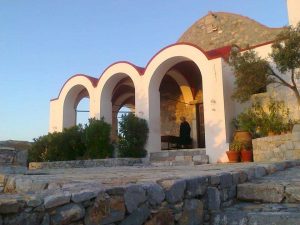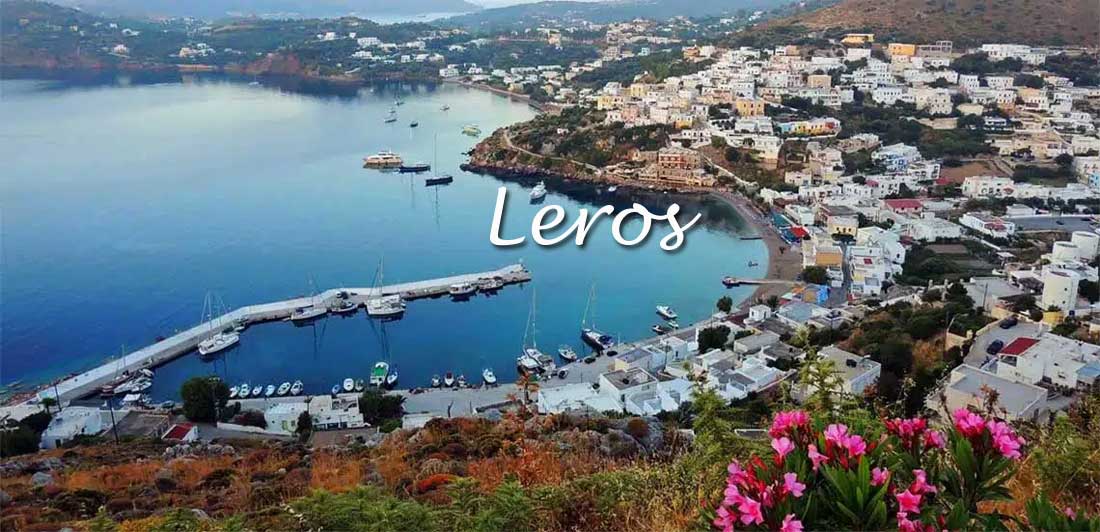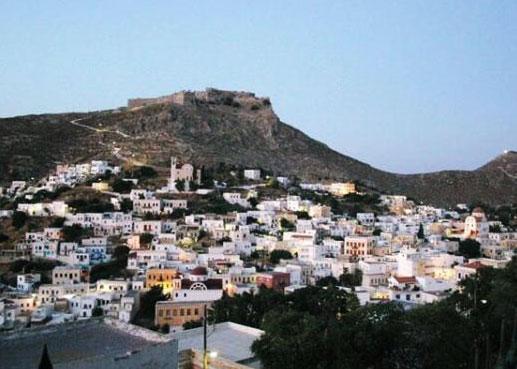The castle of Leros and the church of Panagia
At the top of the hill over Platanos, dominates the Castle of Leros, where you can go by car, or climb the 500 steps that start from Platanos. The Castle of Leros was build by the Byzantine Emperor Alexios Komninos in the 11th century AD together with the Castle of Patmos.
It was given the administration of both Castles to the Monc Theologos of Patmos. Later the fortress occupied by the Knights of St John and later by the Ottomans.
The well-known bell of the Church was made of bronze and silver and created by famous Russian craftsmen, it calls the Lerians in celebrations but also in times of danger like it did during the pirate raides and the wars through the centuries.
The Church of Panagia of the Castle

For centuries now the island lives, breaths and sleeps with faith and respect for its Panagia, who is the best, most beautiful, sweetest and most sympathetic of all the Panagias on the island. Every year, on her saint’s day, locals and those not from Leros climb up the 500 steps from Platanos to the castle on foot.
Mothers too dress their children in black for the fifteen days before and on the 14th August they take them up to the Panagia Castle to the evening service, they light a candle, kneel under the icon of the Panagia and as soon as the service ends they shed the black clothes and leave them for the Panagia.
The women bake holy bread, hurry to the religious services, get on the psalter and fill the church with melodic psalms, psalms that come from the depths of their souls, as a thank you for the help they have received.
The icon of Virgin Mary it believed by the locals to be miraculous. When the Turks ruled the castle they noticed a boat in the sea one night. As it approached they confirmed to their astonishment that in the boat was just the icon of the Panagia and two lit candles.
Justifiably they wondered how the boat had traveled and considering it a miracle they informed the Turkish administrator and transported the icon to the cathedral. The bells were rung, people gathered and a “doxologia” (a service of worship) took place.
However the next morning the icon was found at “Mparouthana” (ammunition stores) on a barrel of gunpowder and in front of it two candles were lit. The guards were accused of having been paid by the Giaourides (Greeks in Turkish) and they were severely punished. The bishop took the icon to the cathedral but the next day the icon was again found in the same place at “Mparouthana”.
The Turks were confused. This time the keys to the iron door were held by the commander himself. “How did the icon find its way in there?” It was decided that the Panagia tis Megalohari would stay in “Mparouthana”. Indeed the boat which brought her to the island, was cut up and the pieces of wood were used to make talismans which were distributed in her honour. From then on, the boats have been coming to her, full of Christians and Turks who bring the ill to be cured and be blessed.
However the icon of the Panagia Megalohari made its way to the island, it has firmly become part the Lerians lives. It has become their conscience. It has become their greatest oath. A heavy oath which no one could even imagine breaking. Every 15th August Lerian emigrants return to their island to pay their respects to their Panagia, their hope and to light a candle in her honour and all year round, wherever they may be, they turn to their Megalohari in times of joy and sadness.

